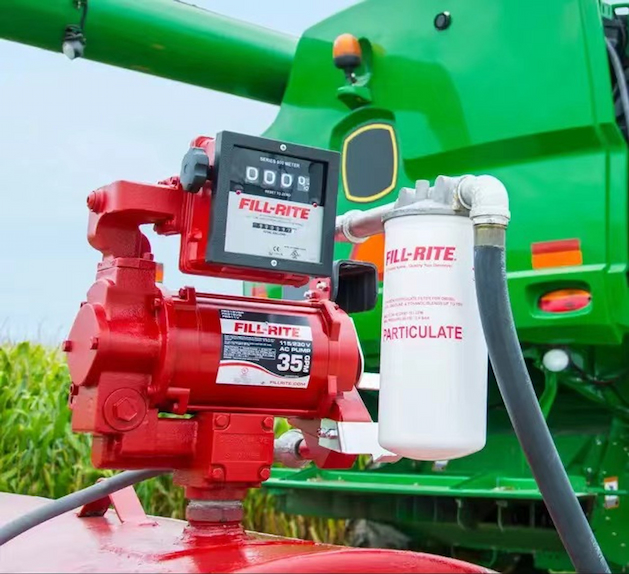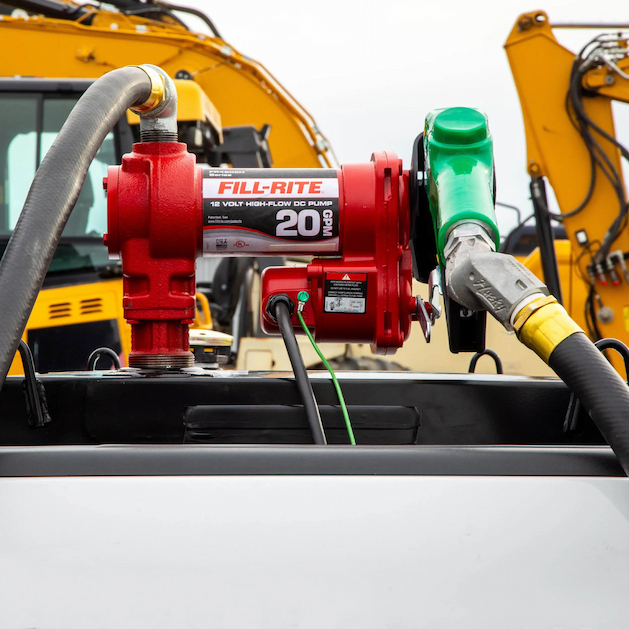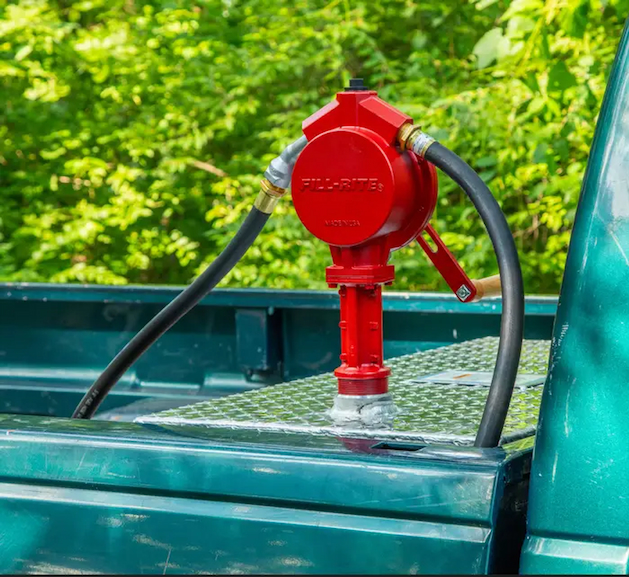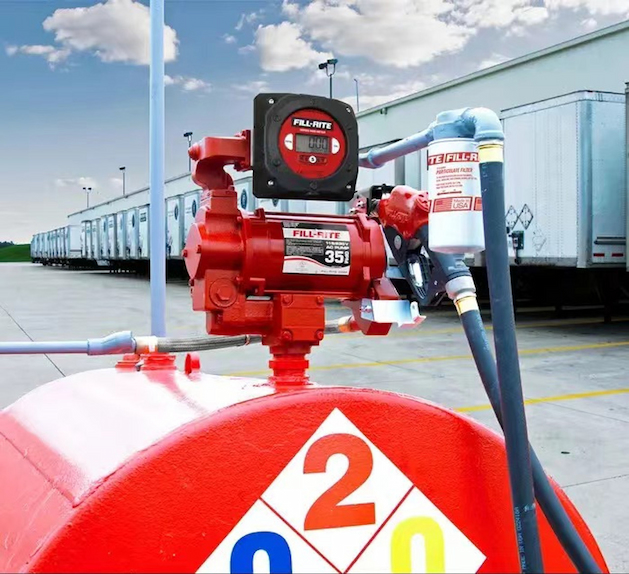When it comes to efficient and safe transfer of fuel, oil and other fluids, you need pumps that can be trusted to perform. For more than six decades, Fill-Rite has been equated with dependable transfer pumps for everyone from farmers and fleet operators to industrial plants and marine vessels. Whether you’re fueling equipment in remote areas or constructing a stand-alone fueling station, understanding the line of Fill-Rite transfer pumps and what they offer will help you make the right choice for your specific application.
Mobile Transfer Pumps: Flexibility Where You Need It

Mobile transfer pumps are the heavyweights of portable fuel transferring, designed to bring fuel directly to your machinery rather than dragging equipment to a fixed point of fueling. Fill-Rite has both 12V DC and 115V AC mobile pump models available, each with its respective advantages depending on your application.
The 12V DC pumps are particularly popular among construction and agricultural workers who need to fuel equipment in the field. They are easily operated straight from a vehicle battery or from a portable power supply, making them very handy to use where there is no power outlet nearby. Models like the FR1210G possess highly robust flow rates while remaining easily portable, usually with corrosion-proof aluminum construction that minimizes the weight.
For applications where AC power is readily available, 115V pumps tend to offer higher flow rates and the ability to move more demanding loads. These high-performance Full Rite pumps are excellent for workshops, maintenance areas, and semi-fixed installations where a constant source of power is not a concern. More power equates to a higher rate of fuel transfer, and this can be the determining factor for tasks involving repeated refueling of heavy equipment or large numbers of vehicles.
Stationary Transfer Pumps: Permanent Solutions for High-Volume Applications

Stationary Fill-Rite pumps are specifically designed for applications where fuel transfer is a recurring, high-volume operation. These systems are commonly utilized in fleet maintenance centers, farm operations and industrial applications where multiple pieces of equipment must be refilled frequently.
The stationary lineup often has a more robust construction and higher flow rates compared to its mobile counterparts. Most of them are also pre-wired with features like automatic shut-off, preset gallon delivery and better filtration systems. They tend to be made for continuous duty cycles since they can withstand regular use without the thermal constraints that portable units of smaller size can experience.
Stationary systems can be mounted on fuel tanks, embedded within fuel storage systems or installed as part of more comprehensive fuel management systems. This kind of flexibility allows operators to design customized fueling systems that may perfectly fit into their workflow and facility layout needs.
Key Factors to Consider in Choosing Your Pump

Selecting the right Fill-Rite transfer pump requires a consideration of several important factors that will impact performance and longevity.
Flow rate is likely the most important specification to look at. Consider not just your current needs, but your future ones too. A pump that provides 15 gallons per minute will work well for a small operation now, but will be inadequate if you have plans for expansion of your fleet or increasing operational tempo. Balance flow rate needs against power consumption and cost, as higher flow rates tend to require more solid power supplies and increased costs.
Power source availability significantly influences your pump selection. While 12V DC pumps offer maximum portability, they may not provide the flow rates needed for high-volume applications. Conversely, 115V AC pumps deliver superior performance but require reliable electrical infrastructure. Some operations benefit from having both types available for different scenarios.
The fluid that you will be moving affects pump selection more than many are aware. While most Fill Rite USA pumps are compatible with diesel fuel, gasoline and other lubricating oils, some fluids may require special pump configurations or materials. Viscosity, temperature and chemical compatibility must be considered when making your choice.
Key Accessories That Enhance Performance
The right accessories can transform a standard transfer pump into an entire fuel management system:
- Automatic shut-off nozzles ensure that tanks don’t become overfilled and reduce waste while increasing safety in unattended transfers. These nozzles are particularly worth the money on a commercial level when operators are doing multiple things simultaneously.
- Electronic meters provide accurate measurement and recording functions that are valuable for fleet management and compliance with regulations. Some Fill Rite electronic meters feature batch totals, cumulative totals and even data logging features that make it easier to monitor fuel use patterns and locate areas of potential inefficiency.
- Proper filtration protects both your equipment and your pump. Water-separating filters remove water and particulate filters capture debris that might otherwise destroy sensitive fuel system components. Regular filter care ensures reliable pump operation and equipment life.
Hose and nozzle selection impacts safety and convenience. Consider hose length requirements for your typical applications and choose materials suitable for your target fluids.
Making the Right Choice for Your Operation
When you take into account reliability, efficiency and longevity, Fill-Rite transfer pumps are an investment worth making. A well-selected pump system will provide you with years of effortless operation, increase operating efficiency and reduce downtime. Whether your choice is a mobile unit or a stationary system, you are getting a transfer pump solution built to last through rigorous applications.


